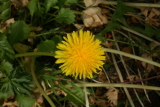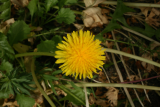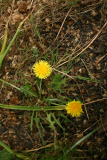Additional notes (click to expand)
Medicinal
Medicinal uses
Uses supported by clinical data
No information available.
Uses described in pharmacopoeias and well established documents
To stimulate diuresis (2, 5), increase bile fl ow and stimulate appetite, and
for treatment of dyspepsia (2).
Uses described in traditional medicine
As a galactagogue, laxative and tonic. Treatment of boils and sores, diabetes,
fever, infl ammation of the eye, insomnia, sore throat, lung abscess,
jaundice, rheumatism and urinary tract infections (10).
Contraindications
Radix cum Herba Taraxaci is contraindicated in obstruction of the biliary
or intestinal tract, and acute gallbladder infl ammation. In case of gallbladder
disease, Radix cum Herba Taraxacum should only be used under the
supervision of a health-care professional (2).
WHO Monographs on Selected Medicinal Plants. Volume 3. 2007. WHO, Geneva
Medicinal uses
Uses supported by clinical data
No information available.
Uses described in pharmacopoeias and well established documents
To stimulate diuresis (2, 5), increase bile fl ow and stimulate appetite, and
for treatment of dyspepsia (2).
Uses described in traditional medicine
As a galactagogue, laxative and tonic. Treatment of boils and sores, diabetes,
fever, infl ammation of the eye, insomnia, sore throat, lung abscess,
jaundice, rheumatism and urinary tract infections (10).
Contraindications
Radix cum Herba Taraxaci is contraindicated in obstruction of the biliary
or intestinal tract, and acute gallbladder infl ammation. In case of gallbladder
disease, Radix cum Herba Taraxacum should only be used under
the supervision of a health-care professional (2).
Contraindications
Radix cum Herba Taraxaci is contraindicated in obstruction of the biliary
or intestinal tract, and acute gallbladder infl ammation. In case of gallbladder
disease, Radix cum Herba Taraxacum should only be used under
the supervision of a health-care professional (2).
WHO monographs on medicinal plants commonly used in the Newly Independent States (NIS). 2010. WHO, Geneva
Nomenclature
Reclassified as Taraxacum sect. Taraxacum.
Plants of the World online, Kew Science https://powo.science.kew.org/taxon/urn:lsid:ipni.org:names:254151-1#synonyms
link
Other use
In times of deprivation the roasted and powdered root has been used to make a 'Coffee-like' drink.
The latex contains isoprenoid molecules which can be harvested and processed to make a rubber-like material.
https://en.wikipedia.org/wiki/Taraxacum February 2019
Taraxacum officinale F.H.Wigg.
Family: ASTERACEAEGenus: Taraxacum
Species: officinale F.H.Wigg.
Common names: Dandelion
Pharmacopoeia Londinensis name: Taraxicon, Dens Leonis
Distribution summary: N. Africa, Eurasia
Habit: Perennial
Garden status: Currently grown
Garden location: Plane tree bed (P)
Reason for growing: Medicinal, other use, traditional herbal registration



